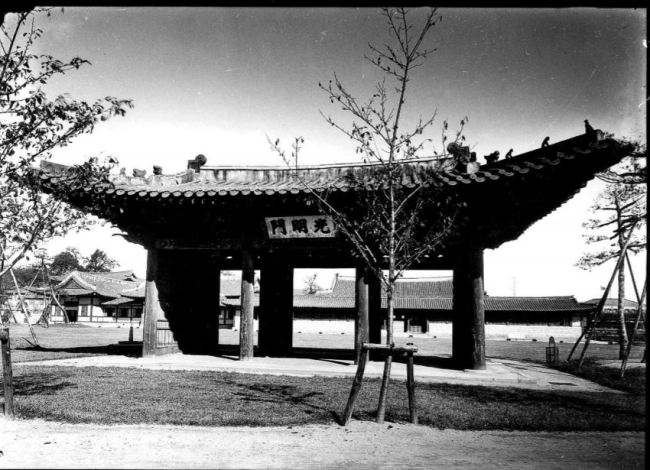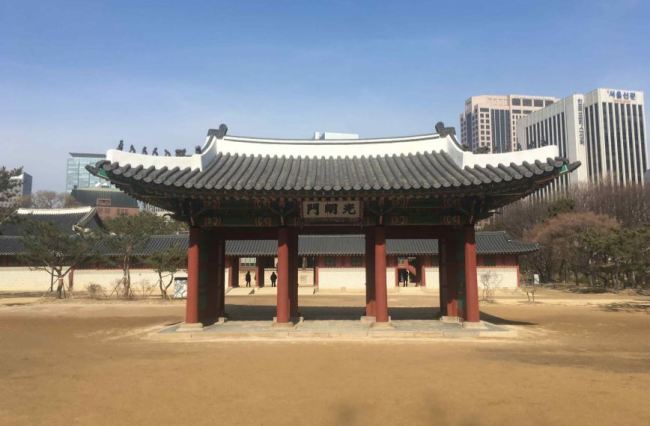Royal palaces, tombs to open gates to commemorate March 1 Movement
By Yoon Min-sikPublished : Feb. 25, 2019 - 16:12
Royal palaces and tombs across the country will be open to all visitors free of charge this Friday to mark the centennial of the March 1 Independence Movement of 1919.
According to the Cultural Heritage Administration, the Joseon-era palaces Gyeongbokgung, Changdeokgung, Deoksugung and Changgyeonggung will be open free of charge on Friday, along with the shrine Jongmyo and the royal tombs of the Joseon Kingdom. It is the first time they will be open free of charge for the March 1 holiday.
According to the Cultural Heritage Administration, the Joseon-era palaces Gyeongbokgung, Changdeokgung, Deoksugung and Changgyeonggung will be open free of charge on Friday, along with the shrine Jongmyo and the royal tombs of the Joseon Kingdom. It is the first time they will be open free of charge for the March 1 holiday.

The March 1 Independence Movement refers to a nonviolent protest against Japan’s colonial rule in 1919, when Koreans took to the streets and waved the Korean national flag, the Taegeukgi, while shouting, “Manse!” (“Manse!” means “Hurray!”) The date was designated a day of national commemoration in 1946, a year after Korea gained its independence, and became a national holiday in 1949.

Deoksugung, the main palace for the short-lived Korean Empire before the peninsula was annexed by Japan, will hold a special event Friday at 1:30 p.m. to celebrate the restoration of a Joseon-era gate called Gwangmyeongmun to its original form. The gate had been remodeled under Japanese rule, and the restoration project started in June.
The palace, then called Gyeongungung, holds special meaning as it was there that King Gojong declared in 1897 that he was founding the Korean Empire. A commemorative display to symbolize the king’s funeral in January 1919 will be placed at the main gate, Daehanmun, and remain there until March 5.
The king’s death is thought to have sparked the March 1 protest the same year, followed in April by the establishment of the provisional government of the Republic of Korea.
Around 100 citizens will re-enact the March 1 Independence Movement on Friday at Gojong’s final resting place in Hongneung, Namyangju, Gyeonggi Province.
By Yoon Min-sik
(minsikyoon@heraldcorp.com)








![[Graphic News] More Koreans say they plan long-distance trips this year](http://res.heraldm.com/phpwas/restmb_idxmake.php?idx=644&simg=/content/image/2024/04/17/20240417050828_0.gif&u=)
![[KH Explains] Hyundai's full hybrid edge to pay off amid slow transition to pure EVs](http://res.heraldm.com/phpwas/restmb_idxmake.php?idx=644&simg=/content/image/2024/04/18/20240418050645_0.jpg&u=20240419100350)






![[From the Scene] Monks, Buddhists hail return of remains of Buddhas](http://res.heraldm.com/phpwas/restmb_idxmake.php?idx=652&simg=/content/image/2024/04/19/20240419050617_0.jpg&u=20240419175937)

![[KH Explains] Hyundai's full hybrid edge to pay off amid slow transition to pure EVs](http://res.heraldm.com/phpwas/restmb_idxmake.php?idx=652&simg=/content/image/2024/04/18/20240418050645_0.jpg&u=20240419100350)

![[Today’s K-pop] Illit drops debut single remix](http://res.heraldm.com/phpwas/restmb_idxmake.php?idx=642&simg=/content/image/2024/04/19/20240419050612_0.jpg&u=)